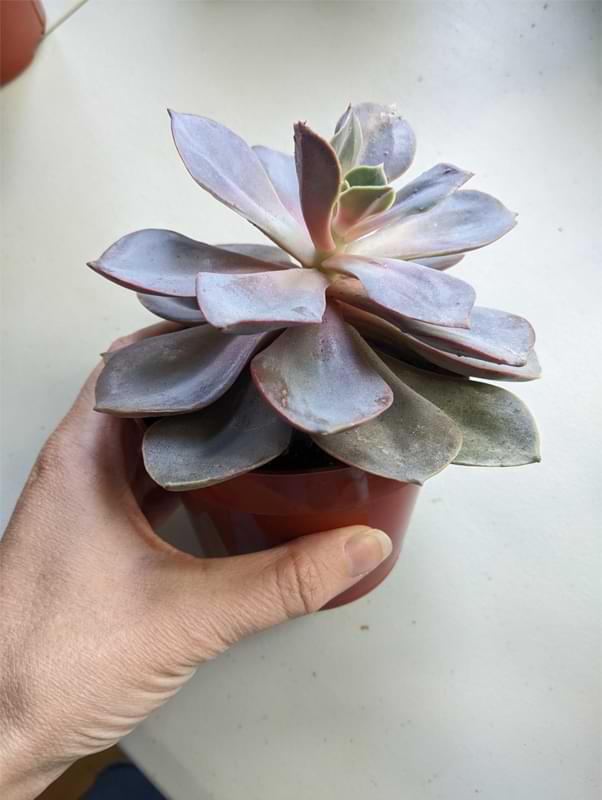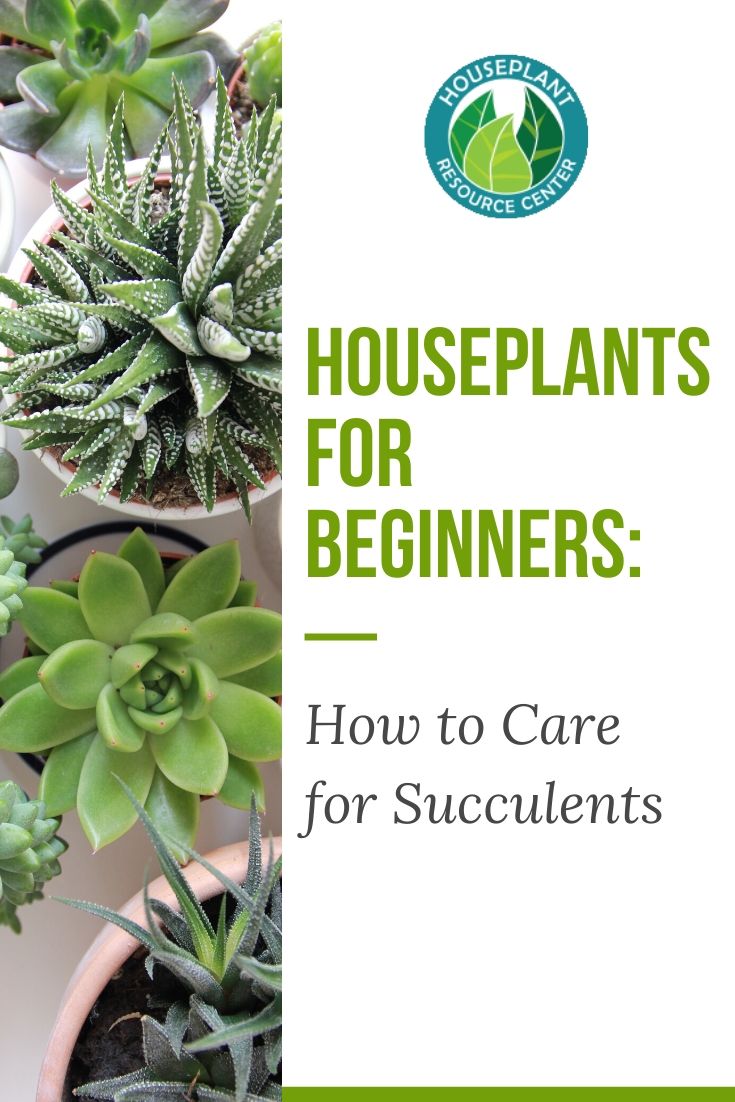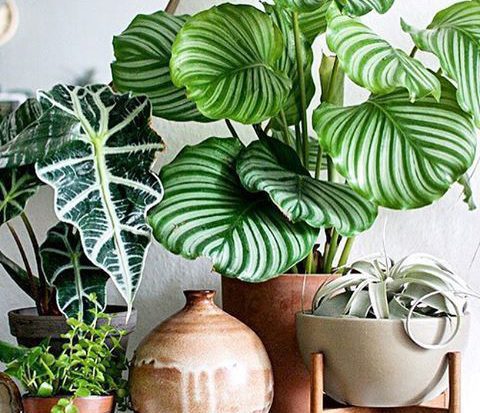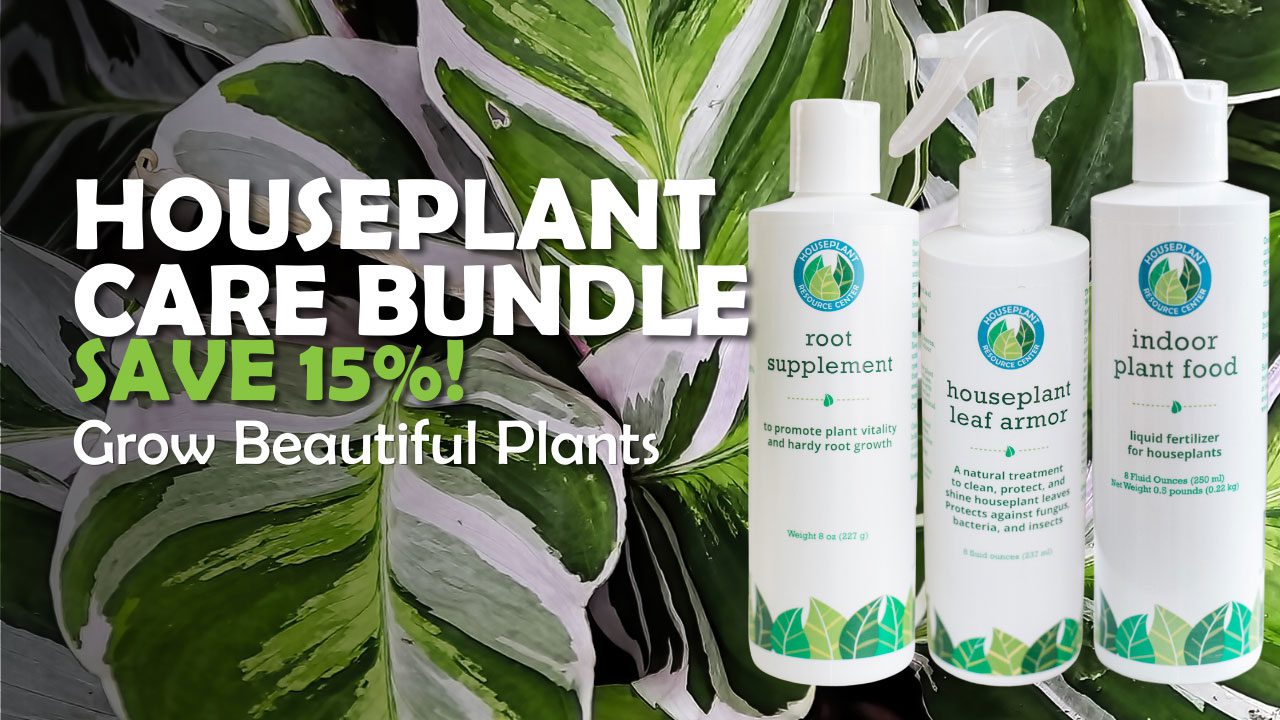I want to introduce you to one of the easiest types of plants to care for: succulents. If you can learn how to care for succulents, this will set you up for success with all kinds of houseplants!
These plants are super popular right now thanks to their ease of care, manageable size, and variety of shapes and colors, so I’m sure you’ve seen them before in terrariums and cute, little arrangements.
You might be drooling over green, luscious houseplant pictures on Instagram, but maybe you’ve never had a houseplant in your life. Or maybe you have a “black thumb” and a history of accidentally overwatering plants or forgetting about them until they’re a wilted husk in a pot.
Plants have a bit of a learning curve, which is why it’s best to start with some low-maintenance plants that are perfect for beginners. That way, you can practice on hardy plants before moving up to something more challenging like a monstera or a fiddle leaf fig.
If you’re a little nervous about dipping your toes in the world of houseplants, it’s okay! I totally get it.
The trick to succulents is simple: Don’t overwater them. As long as you can do that, these plants are pretty hardy and easy to care for.
Unlike most houseplants, succulents are desert dwellers, which makes them ideal for drier climates or if you tend to forget to water your plants.
This family of plants included cactuses, aloe plants, echeveria, jade plants, snake plants, etc.
Characteristics of Succulents
Thick, waxy, water-filled leaves
The secret to succulents’ success is their water-filled leaves. Succulents can go for longer periods without water and thrive in low humidity because they store water in their leaves. They’re kind of like the camel of the plant world!
Many succulents have also developed spikes to prevent animals from eating them for water. Pretty smart!

How to Care for Succulents
While care is mostly the same for all succulents, different species do have slightly different preferences. Some prefer more or less light and some can handle overwatering a little better than others. It never hurts to Google your particular variety to learn more about it.
Here are some general guidelines for caring for succulents.
Light
Succulents enjoy quite a bit of direct sunlight, so they’ll be happiest right in the sill of an east-facing window. While they enjoy direct sunlight, they can also get sun-stress if they get too much, so a west-facing window might be a little too strong. As long as you avoid lots of direct afternoon light, you should be fine.
Water
The first rule of succulents: Do NOT overwater! Too much water will cause the plant to rot. Put succulents in a pot with drainage holes and a fast-draining soil. Cactus soil works well, and you could even mix in a little perlite or orchid bark for good measure.
Water when the soil is completely dry all the way to the bottom of the pot, which usually ends up being every 10-20 days or more. (Note: You’ll need to water a little more often in the summer, like every 7-14 days, and less in the winter, like every 14-21 days or longer.)
Temperature/humidity
Succulents are very forgiving with temperature, so they should be fine in any home as long as you don’t put them outside in the winter or right next to a heating vent.
Since succulents are desert plants, they need very little humidity—perfect if your home is on the dry side!
The perfect intro plants
See, that doesn’t sound so hard!
When you feel comfortable with succulents, make sure to check out our guides for other houseplants for beginners:
Spider Plants: A Gateway Into the World of Indoor Houseplants
Pothos: The Perfect Beginner Houseplant
The Easiest Houseplants to Grow
How to Be a Snake Plant Charmer
Dracaena: Care for this Beginner-Friendly Plant
You’ve got this!
Essentials for Your Houseplant:
- Make sure you’re giving your plants the right nutrients! Our Indoor Plant Food works perfectly for almost all indoor plants, and it’s easy to use. Grab it here!
- Use our premium well-draining potting soil for your houseplant.
- Protect your houseplant from insects, bacteria, and fungus with our Houseplant Leaf Armor. (As an added bonus, the Leaf Armor also cleans and adds shine to your houseplant’s leaves!)
- Use a moisture meter like this one to always know how thirsty your plant is.
- Click here to shop live plants!
To learn more:
- Join us for our free Top Secrets From Fiddle Leaf Fig Growers Webinar or enroll in our free Advanced Fiddle Leaf Fig Care Course.
- Read The Fiddle Leaf Fig Expert, your complete guide to growing healthy fiddle leaf fig plants. The book is available in full-color paperback or Kindle edition on Amazon now!
- Click to join our community on Facebook: Fiddle Leaf Fig Plant Resource Group.




